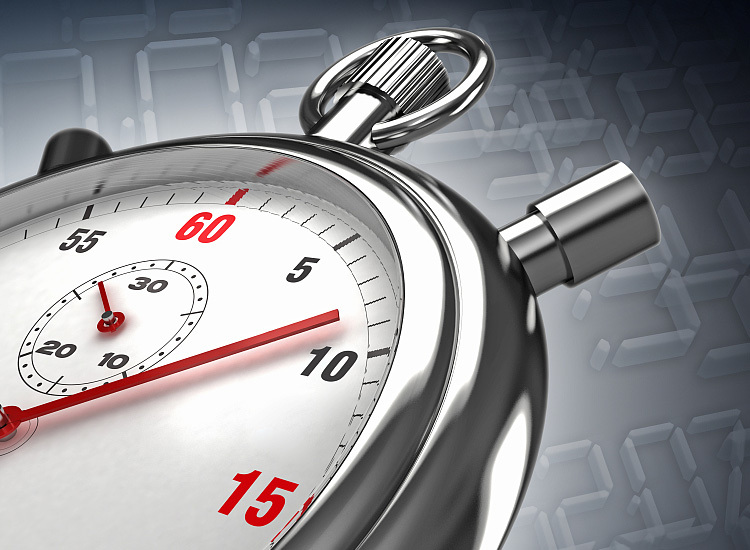NEWS CENTER

How to Choose the Best 144 Movement LCD Timer Movement for Your Electrical Needs
How to Choose the Best 144 Movement LCD Timer Movement for Your Electrical Needs Table of Contents 1. Understanding the 144 Movement LCD Timer Movement 2. Key Features to Look for in a Timer Movement 2.1 Precision and Accuracy 2.2 Display Options 2.3 Power Source 2.4 Durability and Build Quality 3. Different Types of 144 Movement LCD Timer Movements 3.1 Standard Models 3.2 Prog
How to Choose the Best 144 Movement LCD Timer Movement for Your Electrical Needs
Table of Contents
1. Understanding the 144 Movement LCD Timer Movement
2. Key Features to Look for in a Timer Movement
2.1 Precision and Accuracy
2.2 Display Options
2.3 Power Source
2.4 Durability and Build Quality
3. Different Types of 144 Movement LCD Timer Movements
3.1 Standard Models
3.2 Programmable Models
4. Applications of 144 Movement LCD Timer Movements
5. Top Brands and Models to Consider
6. Installation and Setup Tips
7. Common Mistakes to Avoid
8. Frequently Asked Questions (FAQs)
9. Conclusion
1. Understanding the 144 Movement LCD Timer Movement
The **144 movement LCD timer movement** is an essential component in a variety of electrical applications, functioning to count down or up, control devices, and manage time with precision. These timers are popular in both residential and industrial settings, thanks to their ease of use, reliability, and versatility. Understanding the specifics of this component is key to making an informed choice for your electrical needs.
2. Key Features to Look for in a Timer Movement
When selecting the ideal **144 movement LCD timer**, there are several critical features that we must consider to ensure it meets our specific requirements. This section delves into the most important attributes.
2.1 Precision and Accuracy
Accuracy is paramount when it comes to timer movements. A high-quality **144 movement LCD timer** should provide precise timing, allowing for minimal deviation from the set time. This is particularly crucial in industrial applications where every second counts.
2.2 Display Options
The display of the timer is another essential feature. We should look for a model with a clear, easy-to-read LCD display that shows time in various formats, such as hours, minutes, and seconds. Backlit screens can enhance visibility, especially in dimly lit environments.
2.3 Power Source
Power options can significantly influence the performance and longevity of the timer. Some models operate on batteries, while others can be powered via AC or DC sources. Choosing the right power source based on the intended application is critical for uninterrupted operation.
2.4 Durability and Build Quality
Timers used in industrial settings may be exposed to harsh conditions. Therefore, selecting a model made from high-quality materials that can withstand vibrations, temperature fluctuations, and moisture is vital. Ensuring the timer has a robust build can prevent premature failure.
3. Different Types of 144 Movement LCD Timer Movements
Not all **144 movement LCD timers** are created equal. This section explores the various types available to help us make an informed decision.
3.1 Standard Models
Standard models are straightforward, providing basic countdown and countdown functions. These are typically easy to use and require minimal setup, making them ideal for simple applications.
3.2 Programmable Models
For more complex needs, programmable models allow users to set multiple timers or cycles. These are particularly useful in environments where timing varies frequently, such as in manufacturing processes.
4. Applications of 144 Movement LCD Timer Movements
The **144 movement LCD timer movement** finds applications across various sectors. From industrial automation to household appliances, these timers play a pivotal role in efficient time management.
In industrial settings, they can control machinery operations, manage production lines, and improve workflow efficiency. In residential applications, we might find them in microwave ovens, irrigation systems, and other devices that require precise timing.
5. Top Brands and Models to Consider
When selecting a **144 movement LCD timer**, we must consider reputable brands known for quality. Some leading brands include:
- **Omron**: Renowned for precision and reliability in industrial applications.
- **Siemens**: Offers a range of programmable timers suitable for complex applications.
- **Honeywell**: Known for user-friendly residential timers with solid performance.
Each of these brands offers various models tailored to specific needs, so we should review them thoroughly to find the best fit.
6. Installation and Setup Tips
Once we have chosen the right **144 movement LCD timer**, proper installation and setup are crucial for optimal performance. Here are some tips to ensure a seamless process:
1. **Read the Manual**: Always start by reviewing the user manual to understand specific installation requirements.
2. **Check Compatibility**: Ensure that the timer is compatible with the device it will control.
3. **Secure Connections**: When wiring, ensure all connections are secure and insulated to prevent shorts.
4. **Test Functionality**: After installation, run a quick test to confirm the timer operates as intended.
7. Common Mistakes to Avoid
While selecting and installing a **144 movement LCD timer**, we should be aware of common mistakes that can lead to unsatisfactory performance:
- **Ignoring Power Requirements**: Always verify the power source requirements to avoid damage.
- **Overlooking Environmental Conditions**: Failing to consider the environment in which the timer will operate can lead to premature failure.
- **Neglecting User Feedback**: Reading reviews and feedback from other users can provide insight into the timer’s real-world performance.
8. Frequently Asked Questions (FAQs)
**Q1: What factors should I prioritize when choosing a 144 movement LCD timer?**
A: Focus on precision, display clarity, power source, and durability based on your specific application needs.
**Q2: Can I use a 144 movement LCD timer outdoors?**
A: It depends on the model. Ensure that the timer is rated for outdoor use if it will be exposed to the elements.
**Q3: Are programmable models worth the investment?**
A: Yes, they offer flexibility and can be especially useful in complex applications where timing varies.
**Q4: How long do the batteries in battery-operated timers last?**
A: Battery life can vary but typically ranges from several months to a few years, depending on usage.
**Q5: What should I do if my timer malfunctions?**
A: First, check the manual for troubleshooting steps. If the problem persists, consider contacting customer support for assistance.
9. Conclusion
Selecting the right **144 movement LCD timer movement** for your electrical needs requires careful consideration of various factors, including precision, display options, power source, and durability. By understanding the different types of timers available and their respective applications, we can make an informed choice that enhances performance in our projects. Whether for industrial automation or residential use, investing time in research will yield significant benefits, ensuring efficient time management and reliable operation.
Related News
Laser particle counter and laser dust meter (PM2.5 dust detection
Dust particle counter (laser particle counter) and (Laser dust meter) PM2.5 dust Detector is the principle of laser scattering method for particulate matter detection equipment, but the application of the two fields are different. Dust particle counter is used in cleanroom, clean room to detect cleanliness level.
Competition pattern and development trend of instrument automation industry in recent years
In recent years, a large number of new enterprises into the instruments and meters low-end product market, from the scale and cost of the original leading enterprise products shocks, domestic well-known instrumentation manufacturers in the introduction of technology development, optimize the capital structure, expand business scope, as well as increase cooperation with well-known foreign companies have been strengthened, the market competition is more intense,
Timing/Counter PWM design points and application design reference
According to the characteristics of PWM (pulse width modulation (PWM: (Pulse width modulation) is a very effective mode to control analog circuits by using the microprocessor's digital output), the timing of the use of ATmega128。








